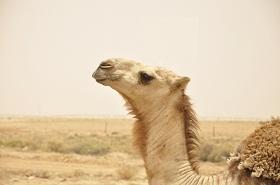Using AI to control energy for indoor agriculture
30 September 2024
Published online 17 June 2010

The Arabian camel, Camelus dromedarius, is the most well-known member of the camel family in the Middle East and North Africa region. In the Arabian Peninsula, it is used as a source of milk and meat, and as a mode of transportation.
As a first step towards sequencing the complete DNA of the Arabian camel, researchers from the King Abdulaziz City for Science and Technology (KACST) and the King Faisal University in Saudi Arabia obtained >23,000 putative genes from a pooled sample of different tissues from camels of different ages and breeds. All the sequences found were collected in the online database CAGBASE. The results were compared with the gene sequences of nine other organisms. More than 8,400 genes found in the Arabian camel were also present in humans, rats and bovines.
Interestingly, the sequencing found an over-representation of genes linked to oxidation–reduction processes. These processes are associated with decreasing psychological stress, so this fits the pattern of the camel being a relatively slow and cool-tempered animal. This also correlates with recent findings that camel milk can reduce both oxidative stress and some infections.
The sequenced genes also shed light on the camel's ability to store fat. Genes that code for zinc-finger proteins, which play diverse roles in lipid binding, were among those most highly expressed in the sequencing.
A network of genes found was also associated with the renal and urological systems, which are important because of the camel's ability to retain large amounts of water, as well as playing a role in hair and skin development.
All three findings are related to important adaptation techniques in camels.
doi:10.1038/nmiddleeast.2010.164
Stay connected: